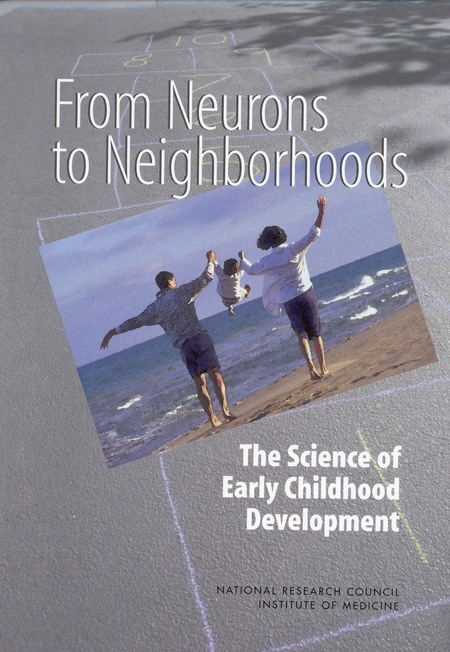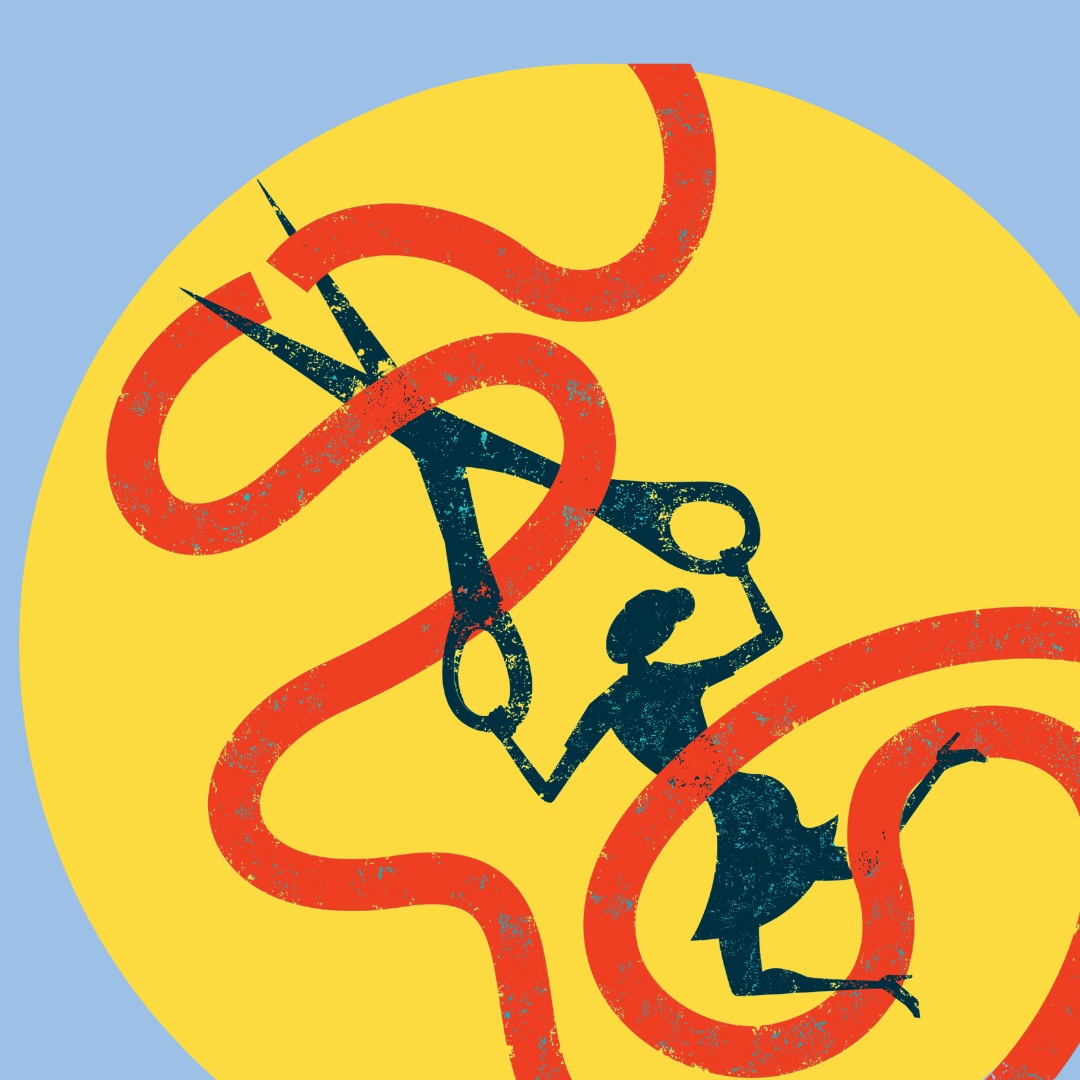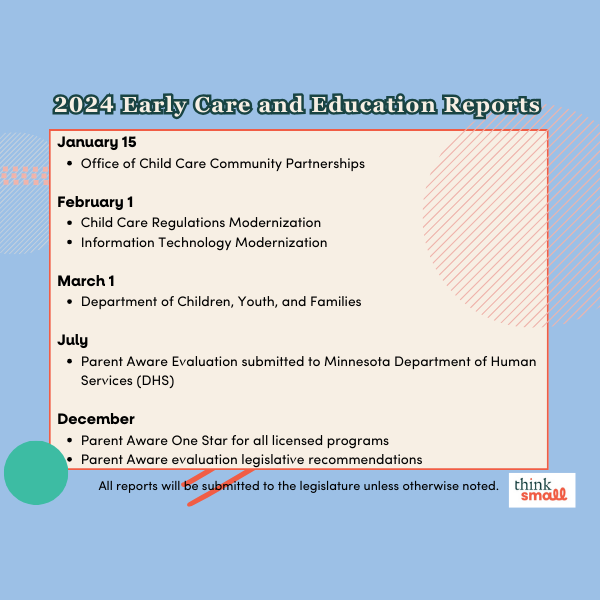Submitted by Jane Kretzmann, on behalf of Elders for Infants (Glenace Edwall, Dave Ellis, Sandy Heidemann, Jim Nicholie, Glen Palm, and Katie Williams).
Elders for Infants is comprised of professionals who have worked in Minnesota in fields of child care, public health, parent education, academia, philanthropy, and government over the past 40 years. From this perspective, we offer a historical context for Minnesota’s early care and education landscape. We acknowledge that the context is complex and that people’s interpretations of past events are bound to differ. Our goal is not to criticize or point fingers, but to offer an honest reflection.

Minnesota’s historic tagline is the land of 10,000 lakes and more recently, the land of 10,000 pilot projects. As a state-supervised, county-administered government, we are committed to local decision-making. Prior to the late 1970s, we were largely a homogeneous state that is often uncomfortable with conflict (Minnesota Nice) and with the “other”—most apparent in the state’s painful history and enduring legacy with Native American and African American people.
Minnesota also exists in a national context, affected by powerful economic and political changes that occurred during the past several decades. These include construction of the federal interstate system that decimated urban neighborhoods, the decline in real wages (1973), cuts to social programs, the War on Drugs that led to mass incarceration, welfare reform, No Child Left Behind, the Great Recession of 2008, and ever widening gaps in income distribution. All contribute to the current reality.
During the course of these 40 years, many changes also occurred in Minnesota. The political landscape shifted from “generous” to “limited government” spending. Early childhood was affected in early 2000’s when the state reduced reimbursement to child care providers, cut direct support to families through the state child care assistance program, cut funding for home visiting and for children’s mental health, and closed University early childhood programs. For example, MnSCU system programs at Mankato and Bemidji were eliminated around 2010.
Over these decades, Minnesota has participated in society’s evolution. The structure of families changed. The nature of work changed. Minnesota’s population grew increasingly diverse. Changes in private sector funding patterns created instability in nonprofits. Welfare reform rules eliminated education opportunities for parents on public assistance, limiting eligibility for child care, causing many programs to close. Minnesota’s Office of State Planning was terminated in 2003. The Department of Children, Families, and Learning, established in the 1990s, was dissolved in 2003.

In response to these changes, state and local agencies came under siege (a kind of post-traumatic stress disorder). Many moved into turf protection, adopted “all or nothing” thinking, or had difficulty collaborating. Concurrently, there were increasing demands for tighter “regulations” to monitor programs. In reaction, many were driven to pilot projects to demonstrate effectiveness. Pilot projects became institutionalized but not funded sufficiently to achieve scale. Government agencies tended to make competitive, time-limited grants that further fractured the program landscape. New alliances formed to capture scarce resources and find winnable issues.
A SYSTEM IS UNIQUELY DESIGNED TO ACHIEVE THE RESULTS IT GETS.
Early care and education providers are expected to do more. However, the system still does not give pay or status to the care of our youngest children.
Minnesota is left with a patchwork of programs (e.g., Early Head Start, Scholarships, Nurse-Family Partnership, School Readiness) and stand-alone independent efforts, a diminished safety net, and agencies disrupted by financial scarcity and policy swings.
Chronic underfunding of critical family supports—beginning in the 1980s and continuing since—has undermined the effectiveness of the entire early childhood system and threatens the vitality of our current and future workforce.
Minnesota has a long and deep commitment to education. In 1858, the Legislature established a uniform system of public schools. In 1933, the state income tax was enacted for the benefit of public schools. The education of older students was deemed most important—a value reflected in pay and work status of K-12 and higher education professionals. That was the 19thand 20thCentury’s understanding.

The 21st Century revealed a new understanding of human development that actually turned education upside down. The publication of Neurons to Neighborhoods in 2000 assembled all of the scientific research on child development at that time, subjected it to peer review and published these findings:
- Later learning is based on earliest weeks and months of a child’s life.
- Human development is complex. Multiple models have developed over time to reflect new scientific discoveries. The “bio-developmental framework” from the National Scientific Council on the Developing Child is based on a growing body of research that links the origins of many health impairments to biological “memories” embedded in the early years, beginning prenatally.
- Social/relational development is critical to learning.
As a result of this knowledge, early care and education providers are expected to do more. However, the system still does not give pay or status to the care of our youngest children.
Concluding Thoughts
Minnesota continues to have a hard time dealing with the “other.” This reality is evident in the striking disparities in health, education and economic outcomes for African American and Native American communities, and in the increasing anti-refugee and immigrant rhetoric.
We can no longer afford to ignore our shadow. We must confront how systems can marginalize families. We must commit to system changes that lead to family engagement and the elimination of structural racism.








